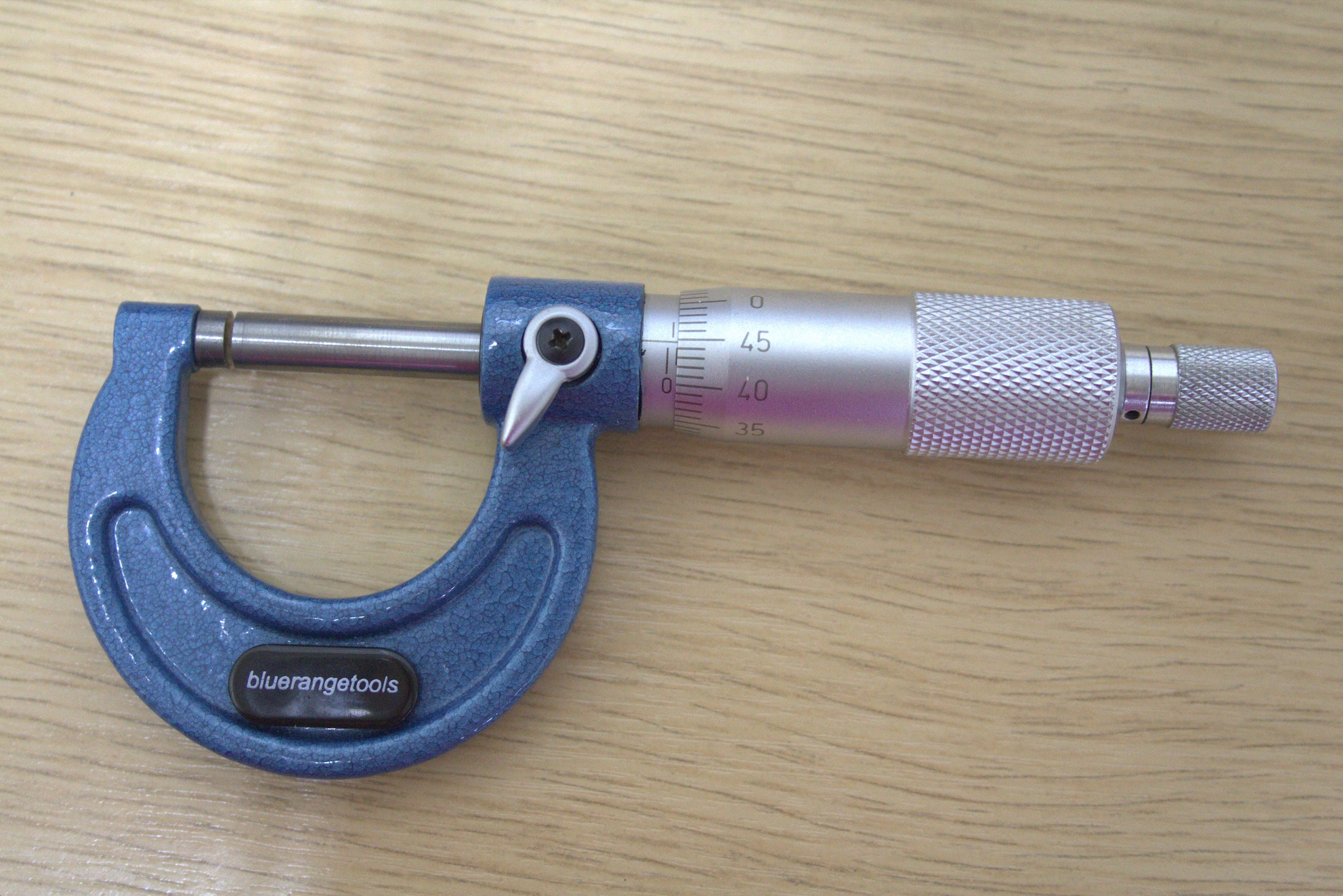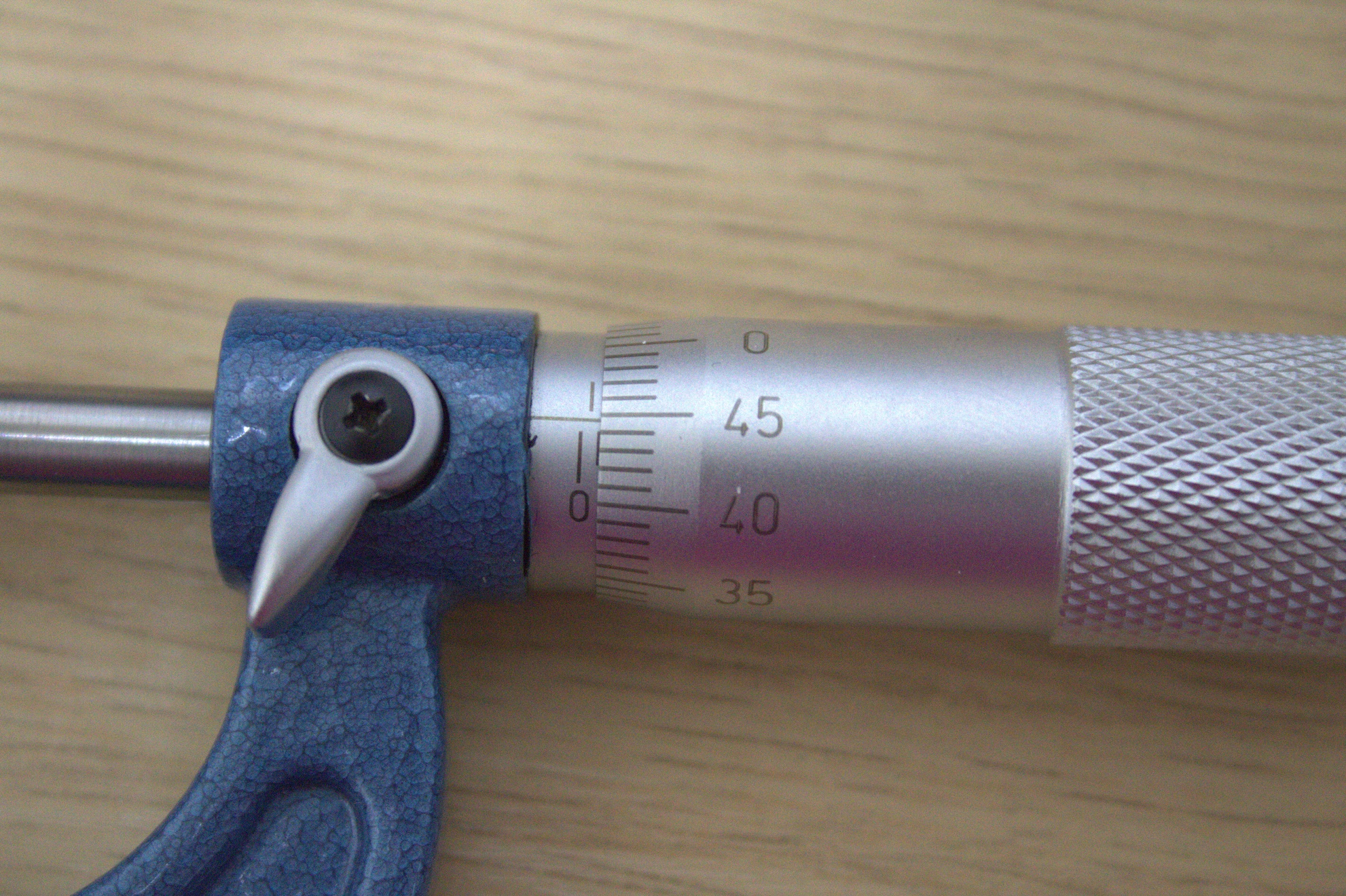Micrometer


Fig. 1: Micrometer.
Micrometers are used to make precise measurements of small objects. An example is shown in figure 1.
Using a Micrometer
To open and close the jaws of the micrometer you should use the friction screw on the end as this prevents over-tightening. Some micrometers have a locking lever which you should put in place once the jaws are closed on the object you are measuring.


Fig. 2: Micrometer example.
The micrometer has two scales, a coarse scale on the rod and a fine scale on the thimble. One rotation of the thimble moves the jaws in or out by 0.5mm. To take a reading, we first read off the coarse scale which will give us a reading to the nearest half-millimetre. In the example in figure 2 it is 0.5mm. Then to read the fine scale on the thimble, look at where the horizontal line on the sleeve is pointing. In figure 2 it is at 45, so the reading is 0.5mm + 0.45mm = 0.95mm.
To use a micrometer yourself, check out our interactive micrometer experiment on our ISE page.
Digital Micrometer
Digital micrometers are also used, which have both the manual scale, and a screen showing the measurement, as showing in figures 3 and 4. When using a digital micrometer, you can simply read the measurement off the screen, although it is always good practice to ensure it corelates with the manual scale.


/prod01/prodbucket01/media/durham-university/departments-/physics/teaching-labs/VT2A9034-1998X733.jpeg)
/prod01/prodbucket01/media/durham-university/departments-/physics/labs/micrometer_digital.jpg)
/prod01/prodbucket01/media/durham-university/departments-/physics/labs/micrometer_digitalscale.jpg)